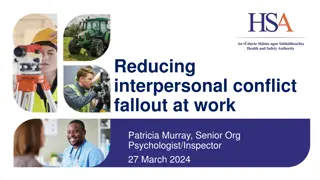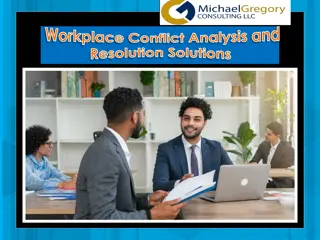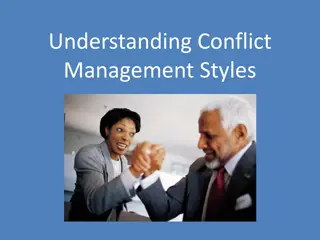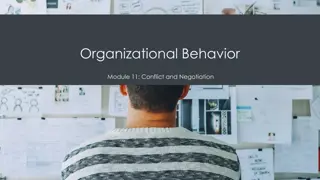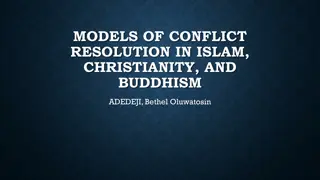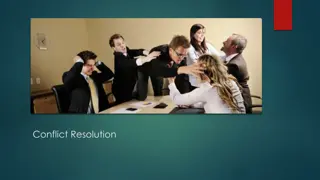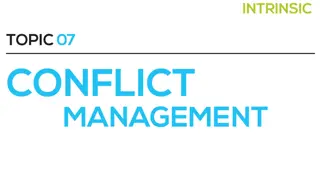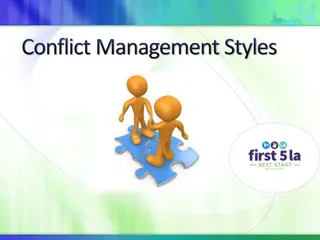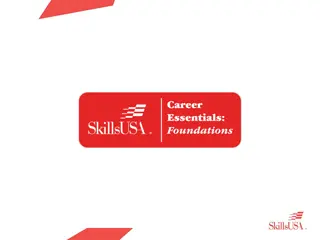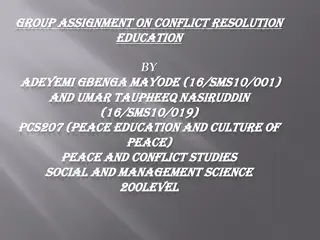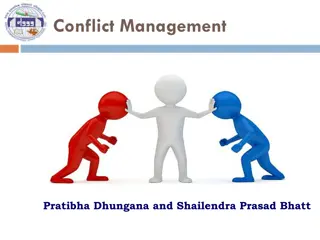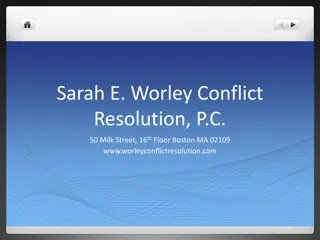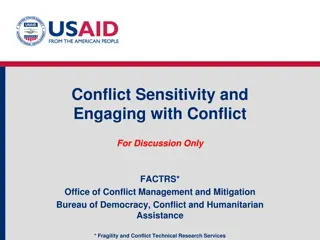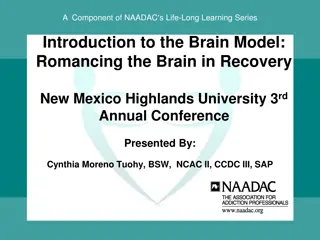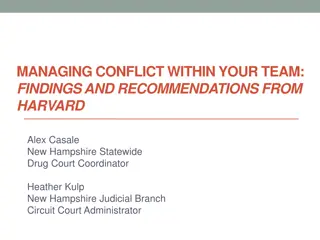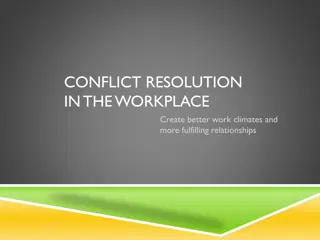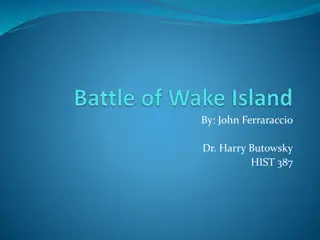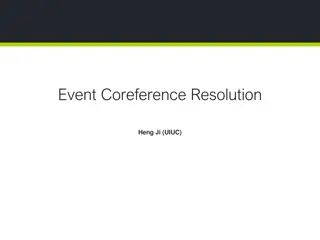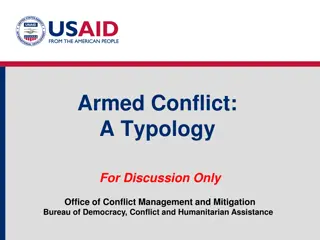Conflict Resolution in Ambon Island: A Timeline of Events
The conflict in Ambon Island between Christian and Muslim communities, stemming from a personal dispute, escalated into riots and violence, leading to official intervention and eventual peace talks amidst ongoing tensions.
Download Presentation

Please find below an Image/Link to download the presentation.
The content on the website is provided AS IS for your information and personal use only. It may not be sold, licensed, or shared on other websites without obtaining consent from the author.If you encounter any issues during the download, it is possible that the publisher has removed the file from their server.
You are allowed to download the files provided on this website for personal or commercial use, subject to the condition that they are used lawfully. All files are the property of their respective owners.
The content on the website is provided AS IS for your information and personal use only. It may not be sold, licensed, or shared on other websites without obtaining consent from the author.
E N D
Presentation Transcript
History Chronology Conflict Resolution Lesson Learned
January 19th, 1999: the personal conflict between Usman and Yopie that triggered between the people of two Kampung: kampung Aboru (Ambonese) and Batu Merah (Makasar). Two hours later the conflict became a great riot between Christians and Muslims in Ambon. January 20th, 1999 : the conflicts spread to some villages: Hunut, Durian, Patah, Waiheru, Beneteng Karang, Hila. January 20-26th 1999: The Airport of Pattimura was closed for commercial flights.
January 21st 1999: the mass riot occurred in Saumlaki, Seram barat, Xanana to react the riot in Ambon. February 23rd 1999: Bomb exploded in Ambon two times at 11.30 AM local time and 12.30 PM. 30 houses were burnt in Batumerah. February 25th 1999: the victims shot in the Church reported to the Commander of the Military Police of Military Resort 174 Pattimura. February 28th-1st March 1999: Peace agreement among the local leaders, religious leaders, cultural leaders and local governments from Ambon island, Haruku island, Saparua island took place in the Office of Military Resort 174 Pattimura. Soon after the agreement there occurred a killing of five persons of one family. One child escaped because he fled to the forest. At 03.30 AM, 200 people from the village of Kolan Ahuru attacked the village of Rinjani. Two persons dead and tree persons injured. When the Muslims praying for Sholat Subuh in the Mosque of Muhajirin, some police members shot the people there. Three people died. The Police refuse that they shot the people inside the Mosque. March 3rd 1999: before the Cabinet meeting in Jakarta, Indonesian Commanderin Chief of the Armed Forced, Gen. Wiranto ordered The Chief of Indonesian Police Gen. Pol.
March 5th 1999: 8 military officers shot the people. One died and 17 injured. March 6th 1999: around 16.00 PM local time two people from Bugis died. Their cars and corpses were burnt. Three hours later, four bombs exploded in Ambon,. Behind the Silo Church and in Batugajah. Atm 02.30 AM the the security officers shot to dead Danny Letty: George Ririhatuela and Markus Silubun were injured seriously; 15 people injured March 7th 1999: The security team formed and sent by General Wiranto began working. There was a riot in Airsalobar Atas: 3 died, many injured. There were 30 times explosions. March 8th 1999: Hendropriyono the Minister of Transmigration and Resettlement of the Forest Cutters accused RMS as a hidden actors of the riot in Ambon. The meeting between Amrmed Force and Reconciliation Team took place in Ambon. The National Human Rights Commission launched the statements: (1) the riot in Ambon is not a religious conflict; (2) do not make statement without real data; (3) to undertake a legal process for those who caused or provoke the riot. March 9th 1999: the conflict went on, many houses were burnt down, 10 died, 30 injured. March 10th 1999: the authority for resolving the conflict moved from Police Officers to Military. The military will solve the conflict in three months since March 11srt 1999. March 11-15th 1999: The tension and conflict were cooling down. March 16th 1999 : the people involved in the conflict delivered their arms. March 17th 1999 : the social and economic activities started to begin, even though the situation was not thoroughly restored.
First meeting in Ambon, leaded by Menko Bidang Politik dan Keamanan Susilo Bambang Yudhoyono and Menko Kesra Jusuf Kalla. Second meeting hold in Makassar, 30 January 2002, by Jusuf Kalla. Third meeting in Ambon, by Jusuf Kalla
The sameness issues 1. Conflict must be ended by dialog; 2. Law must be fair enforced 3. Refugee must be rehabilited 4. Economic and infrastructure rehabilitation; 5. Internal Army and Police must be solved
Muslim 1. Dialog must be in Unitary State of Indonesia; 2. RMS issue must be solved 3. Conlict on 19 January 1999 must be clear 4. Fair and honest problem solving; 5. Improvement of religious education 6. Larkar Jihad must be serve for education adn health service
7. Refugee rights have to restore 8. Patimura University has to rehabilited and fair-balance in leadership; 9. Police Leadership School s Passo must be activited
Christian 1. State is not able to solve conflict; 2. RMS is not real issue; 3. Central government consfiration; 4. Laskar Jihad has to moved from Ambon; 5. Islamization issue; 6. National investigation on Lasar Jihad and accident of 19 January 1999; 7. TANTUI dormitory must be rehabilited
1. Agree to finish conflict; 2. Law must be enforced; 3. Refugees have to remigrate; 4. Army and Police have to solve internally; 5. National investigation board for RMS and Laskar Jihad and 19 January 1999 accident 6. Patimura University and Tantui dormitory must be rehab; 7. Police school must be improved
1. Laskar Jihad 2. FKM and RMS
Hamid Awaludin drafted 1. Meeting is closed, except to other one 2. Participants are mediators, conflicting actors and observers 3. Leader of meeting is mediator 4. Meeting type classified into group meeting, commission meeting and pleno meeting; 5. Decisionas are made based on musyawarah and mufakat
6. Mediators are Coordinating Minister of Welfare Affairs, Jusuf Kalla, Governor of South Sulawesi, Governor of Maluku, Head of Maluku Council, Military Commander of Maluku, Police Commader of Maluku and Mayor of Ambon 7. Conflicting actors are 35 persons (Christian and Muslims)
8. Observers are Muslim Organization, Christian organization and others who has right to give opinion 9. Each participant has right to speak unprovocative way and politeness;
15 January 2002 Ambon Mayor and Head of Local Council met JK in Jakarta 26 January 2002 JK visited Ambon to confice Muslim and Christian to settle peace 30 January 2002 Two groups went to Makasar
At the midnight of 10 February 10 February 2002, Meeting s rule is agreed by two parteis
Muslim side signed by H A Wahab Palpoke, Head Uelama Council, Maluku Province Christian side signed by Pend W.J. Hendriks, Head of Sinode Church
1. Time of resolution: Idul Fitri or sacred day 2. JK s logic: JK s logic was delivered two parteis Choice 1 Please move on conflict till an astonishment condition or disappeared ethnics Choice 2 Government will give all of you weapons in order to continue war Choice 3 All of you fight with government because government do not tolerate violence Choice 4 Stop conflict and sit together for musyawarah Choice 1 Please move on conflict till an astonishment condition or disappeared ethnics Choice 2 Government will give all of you weapons in order to continue war Choice 3 All of you fight with government because government do not tolerate violence Choice 4 Stop conflict and sit together for musyawarah and and mufakat mufakat .
3. MOU is real need 4. Mass media support 5. Key persons involved (preliminary research) 5 W 1 H using stakeholder analysis 6. Leveling dialog (from bottom to top) 7. Network of mediator into two conflicting groups 8. Logistic and resources 9. Common enemy: how to answer the wrong common logic: war for heaven or nirwana or paradise 10.Psychologic capability of mediator 11. Army and police s suport
Priority 1 : Churchs and Mosques Priority 2 School and market and refugee
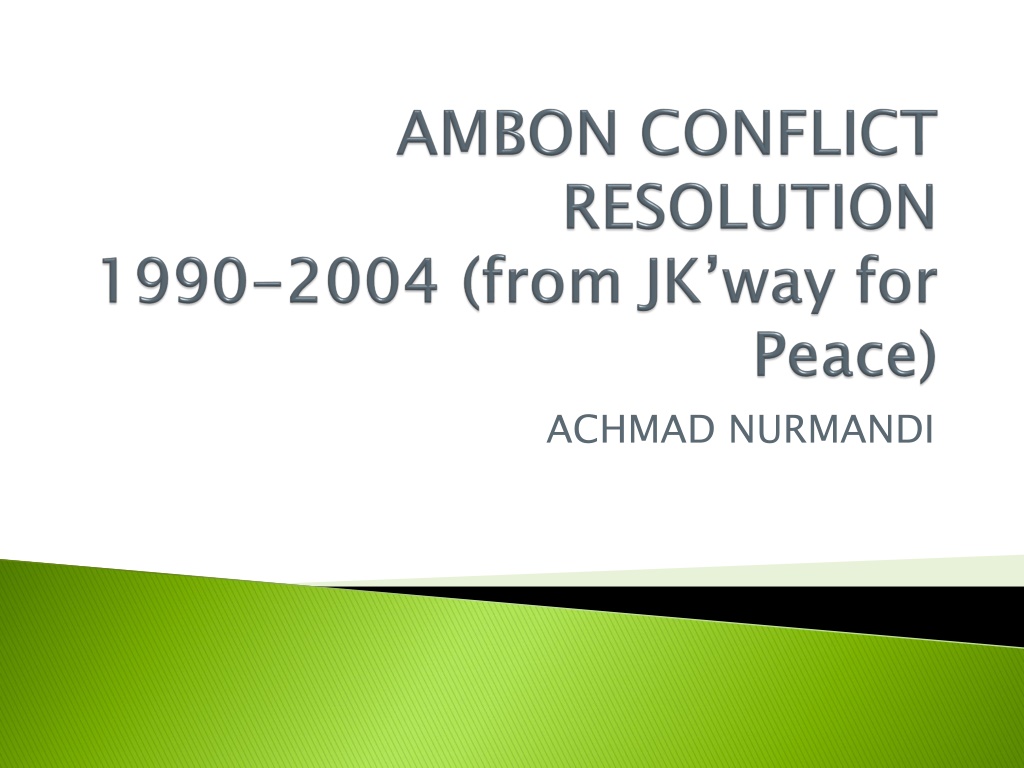
 undefined
undefined








